
Founding Statement of the Honkaku Mystery Writers Club of Japan
As the first step in realizing this goal, we have established the Honkaku Mystery Awards, awarded to the most excellent works published in one year. Even among the many literary awards available, we feel that an award that first of all acknowledges a publication on its merits within the field of honkaku mystery fiction is very meaningful. We have gathered together to manage the awards with the help and approval of many.
We hereby declare the foundation of the Honkaku Mystery Writers Club of Japan.
Signed by the members of the Honkaku Mystery Writers Club of Japan.
November 3, 2000.
*Edogawa Rampo is a pen name derived from "Edgar Allan Poe", with "Edogawa" being the family name. The other names follow the Western naming order of given name - family name.
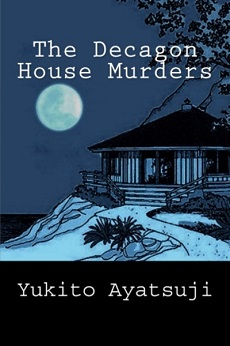
The Decagon House Murders
Author: Yukito Ayatsuji
Translator: Ho-Ling Wong
Publisher: Locked Room International
(Amazon.com / Amazon.co.uk / Amazon.ca / Amazon.com.au / Amazon.in / Amazon.co.jp)
Publishers Weekly selected this book as one of their Best Summer Books 2015 (Mystery/Thriller), as well as one of their Best Books 2015 (Mystery/Thriller).
Interview: A Colorful Shock: PW Talks with Yukito Ayatsuji (Publishers Weekly. May 8, 2015.)
Review: ‘The Decagon House Murders’ evokes Agatha Christie — in Japan by Michael Dirda (The Washington Post. July 15, 2015.)
About Us
The Honkaku Mystery Awards are presented to the most excellent honkaku mystery works published in the year. There are two categories: fiction and critical works. The selection procedure for both categories are identical. At the end of the calendar year members are asked to nominate works of their choice in a questionnaire. A selection committee appointed for a fixed-term will deliberate on the questionnaire results and determine the final award nominees (up to five nominees per category; works by non-members are also eligible). After reading all the nominated works, members cast their final vote in an open ballot. The work which gathers the most votes in its respective category in the public vote-counting ceremony mid-May is chosen to be the recipient of the Honkaku Mystery Award[2].
In the final open ballot round, votes must be accompanied by a certain amount of written commentary on the work. Furthermore, the votes of each member, as well as their commentaries, are all made available to the general public through the publication in a magazine. This is because the Honkaku Mystery Awards are not a popularity contest, but an occasion to test the views on the genre and the evaluation criteria of each and every member.
Recipients of the Honkaku Mystery Award are presented a trophy modeled after a Queen playing card. Because the award is managed voluntarily by the members themselves, there is no monetary award.
[1] The official English title of our organization is “Honkaku Mystery Writers Club of Japan”, but “Honkaku Mystery Club” is also used in some occasions.
[2] For the fiction category, stories published as books (novels and short story collections) are eligible. For the critical works category, critical works published as books, but also essays published in magazines are eligible. There is no separate category of short stories for the Honkaku Mystery Awards, but about ten short stories published in magazines and other publications in the calendar year are chosen to be collected in Best Honkaku Mystery, an annual anthology published every June. Works by non-members are also eligible for this anthology.
2003 Winner (Fiction)
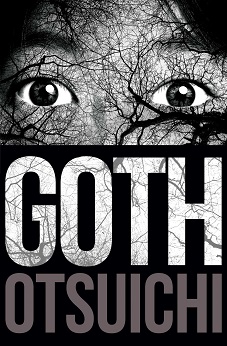
Goth
Author: Otsuichi
Translators: Andrew Cunningham & Jocelyne Allen
Publisher: Haikasoru
(Amazon.com / Amazon.co.uk / Amazon.ca / Amazon.com.au / Amazon.in / Amazon.co.jp)
2005 Nominee (Fiction)
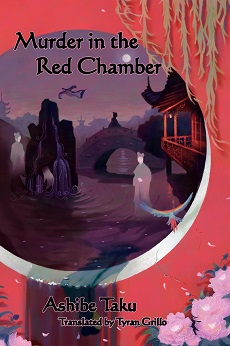
Murder in the Red Chamber
Author: Taku Ashibe
Translator: Tyran C. Grillo
Publisher: Kurodahan Press
(Amazon.com / Amazon.co.uk / Amazon.ca / Amazon.in / Amazon.co.jp)
2006 Winner (Fiction)
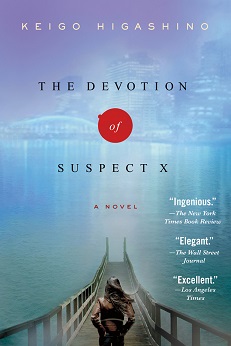
The Devotion of Suspect X
Author: Keigo Higashino
Translators: Alexander O. Smith & Elye J. Alexander
Publishers: Minotaur Books, Little, Brown
(Amazon.com / Amazon.co.uk / Amazon.ca / Amazon.com.au / Amazon.in / Amazon.co.jp)
2010 Nominee (Fiction)
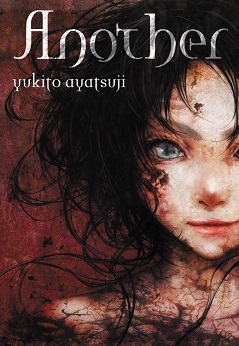
Another
Author: Yukito Ayatsuji
Translator: Karen McGillicuddy
Publisher: Yen On
(Amazon.com / Amazon.co.uk / Amazon.ca / Amazon.in / Amazon.co.jp)
*Both the original novel of Another as well as the manga (comic) adaptation (art: Hiro Kiyohara) are available in English. The two versions are mistakenly treated as the same product on Amazon, so please be careful of that. The hardcover release is the novel, the softcover release is the manga.
Hiroko Minagawa's The Case of the Curious Cadaver in the Dissectorium of Dr. Daniel Burton, winner of the 2012 Honkaku Mystery Award for fiction, will be published in English by Bento Books.
President's Message
The term was born around 1925. It was Saburō Kōga[3] who proposed the concept of honkaku, which he defined as “a detective story that mainly focuses on the process of a criminal investigation and values the entertainment derived from pure logical reasoning.” The term was used to differentiate honkaku mystery fiction from other forms of mystery fiction. Starting around 1930, the word honkaku became the term to describe the classic puzzle-plot detective stories published in the Golden Age of Western detective fiction (represented by writers like Agatha Christie, John Dickson Carr, Ellery Queen and others). Japanese mystery fiction preceding World War II was still in a developing phase, but after a temporary stop caused by the war, a distinct Japanese form of honkaku mystery finally came to be by the 1950s, thanks to writers like Seishi Yokomizo[4], Akimitsu Takagi[5] and Tetsuya Ayukawa[6].
In the 1960s, crime fiction[7] became the most popular form of Japanese mystery fiction, and honkaku mystery fiction, featuring great detectives who treated crimes as intellectual puzzles, were considered outdated. But the wind started to blow favorably for a reassessment of classic mystery fiction in the 1970s, most famously indicated by a renewed interest in Seishi Yokomizo’s work (the Yokomizo boom). Together with the publication of the first issue of Gen’eijō (The Phantom Castle), a magazine on mystery fiction, and the appearance of popular writers like Soji Shimada[8], a paradigm shift in favor of fans of honkaku came in the 1980s.
In 1987, Yukito Ayatsuji[9] made his debut with The Decagon House Murders with the support of Soji Shimada, and Ayatsuji’s “House” series became a bestselling series. This gave honkaku mystery fiction, which values the spirit of fair play and logical reasoning, the opportunity to attract a new group of fans, who enjoyed honkaku mystery fiction as intellectual games between author and reader. More and more writers followed in Ayatsuji’s footsteps, who are collectively called the shin honkaku movement (new honkaku movement). These writers were received extremely well with the young public and from the 1990s on, Japan’s honkaku mystery fiction has developed tremendously.
Honkaku mystery fiction “post-Ayatsuji” has developed into many hybrid-forms crossed with other nearby genres, like horror, fantasy, science-fiction and meta-fiction. The genre’s territory grows day by day and has led to various kinds of works: from the “slice-of-life mystery” (the Japanese form of the cozy mystery), to mystery fiction focusing on narrative tricks (a style which has refined the trope of the unreliable narrator) and even avant-garde forms that pose radical questions like “what is a mystery?”, “what is a detective?” and “what does solving a case mean?” Honkaku’s momentum shows no signs of slowing down and honkaku has become a popular form of entertainment, ranging from films and TV drama series to comics, anime and even videogames.
Honkaku mystery fiction of the 21st century is not a piece of antique that reminds one of a faraway past, but it is a genre that is making dynamic changes even at this very moment. It is not an easy task to explain what honkaku precisely is here, but perhaps one might say that it is exactly this diversity that holds the secret to the everlasting genre. The Japanese word honkaku is one which allows for such diversity, but also a word which includes all of the genre’s rich history that gives honkaku mystery fiction a fresh sense of authenticity.
Signed by Rintarō Norizuki, 4th president of the Honkaku Mystery Writers Club of Japan.
June 27, 2015.
[3] Saburō Kōga (1893-1945) is one of the major writers of Japanese mystery fiction pre-World War II, together with Edogawa Rampo (1894-1965) and others. His 1930 short story ‘The Spider’ has been published in English in Ellery Queen’s Mystery Magazine (EQMM) 2015, December issue.
[4] Seishi Yokomizo’s (1902-1981) The Inugami Clan (1951) has been published in English.
[5] Akimitsu Takagi’s (1920-1995) The Tattoo Murder Case (1948) has been published in English among others.
[6] Tetsuya Ayukawa (1919-2002) is one of the founding members of the Honkaku Mystery Writers Club of Japan. None of his works have been published in English yet.
[7] Often referred to as the “social school” of crime fiction, which places emphasis on realistic crimes in the post-war society and the motives that led to them.
[8] Soji Shimada’s (born 1948) first novel The Tokyo Zodiac Murders (1981) is available in English, as are his two short stories ‘The Locked House of Pythagoras’ (original publication in 1999; published in EQMM 2013, August issue) and ‘The Executive Who Lost His Mind’ (1984; published in EQMM 2015, August).
[9] Among the works by Yukito Ayatsuji (born 1960) available in English, are The Decagon House Murders (1987) and Another (2009).
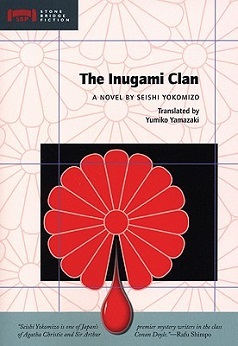
The Inugami Clan
Author: Seishi Yokomizo
Translator: Yumiko Yamazaki
Publisher: Stone Bridge Press
(Amazon.com / Amazon.co.uk / Amazon.ca / Amazon.in / Amazon.co.jp)
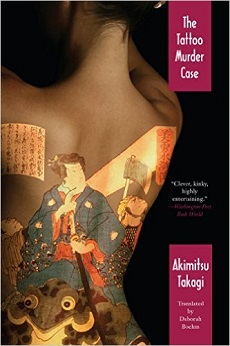
The Tattoo Murder Case
Author: Akimitsu Takagi
Translator: Deborah Boehm
Publisher: Soho Crime
(Amazon.com / Amazon.co.uk / Amazon.ca / Amazon.com.au / Amazon.in / Amazon.co.jp)
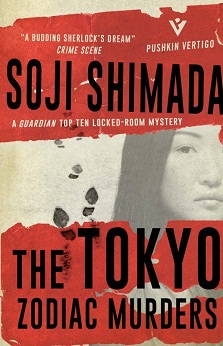
The Tokyo Zodiac Murders
Author: Soji Shimada
Translators: Ross Mackenzie & Shika Mackenzie
Publisher: Pushkin Vertigo
(Amazon.com / Amazon.co.uk / Amazon.ca / Amazon.com.au / Amazon.in / Amazon.co.jp)
News
・Alice Arisugawa’s 1989 novel The Moai Island Puzzle was published in English in May. Alice Arisugawa (born 1959) was the first president of the Honkaku Mystery Writers Club of Japan. The Moai Island Puzzle is his first work to be translated into English.
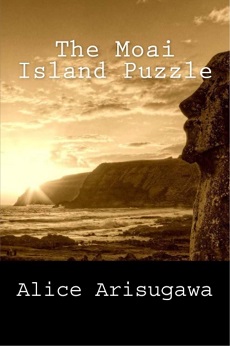
The Moai Island Puzzle
Author: Alice Arisugawa
Translator: Ho-Ling Wong
Publisher: Locked Room International
(Amazon.com / Amazon.co.uk / Amazon.ca / Amazon.com.au / Amazon.in / Amazon.co.jp)